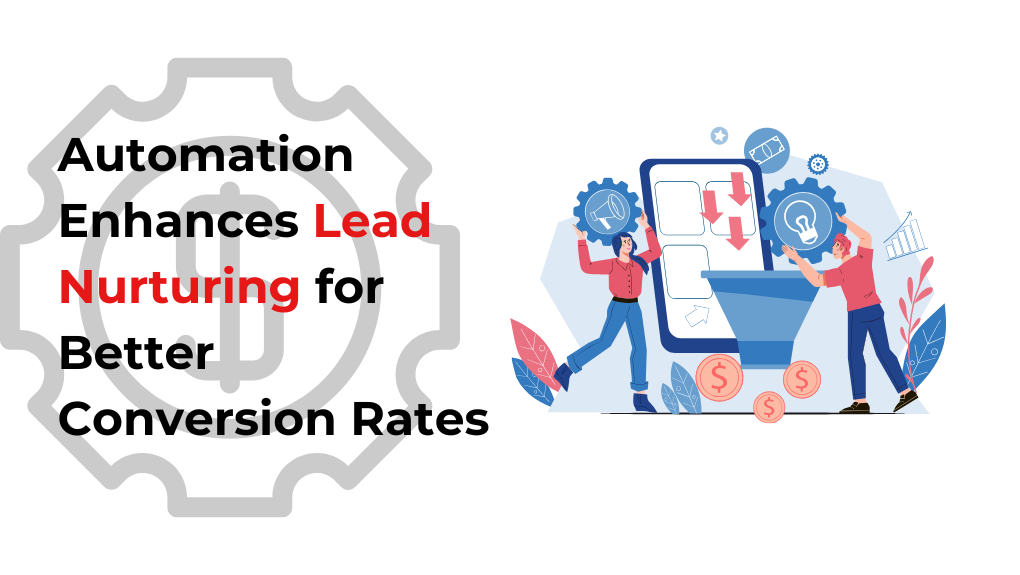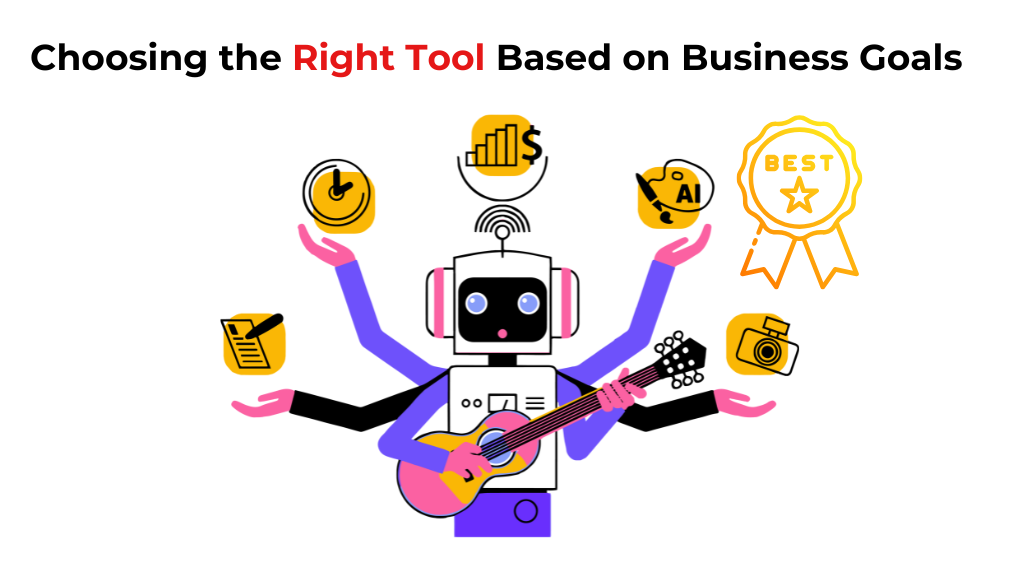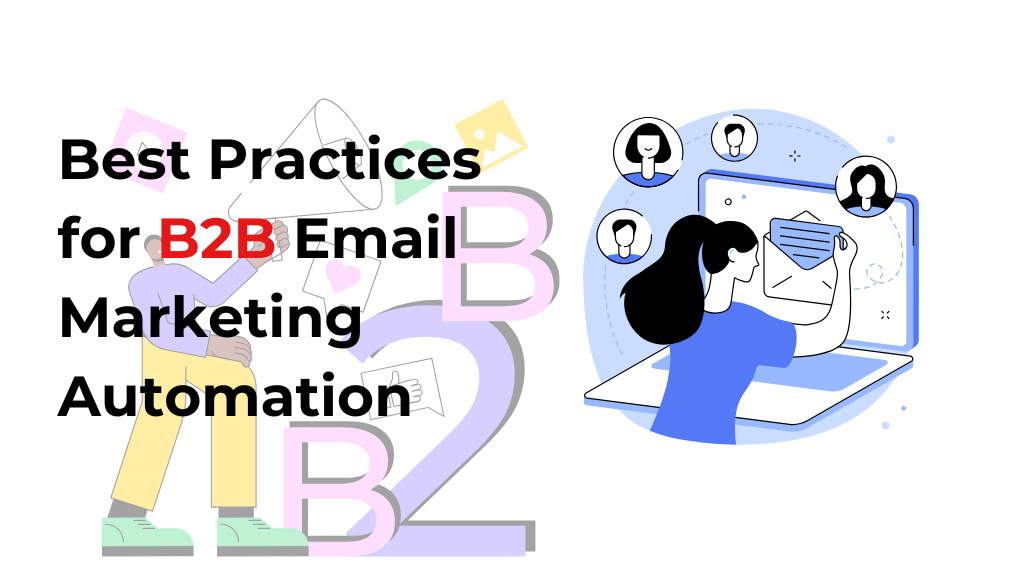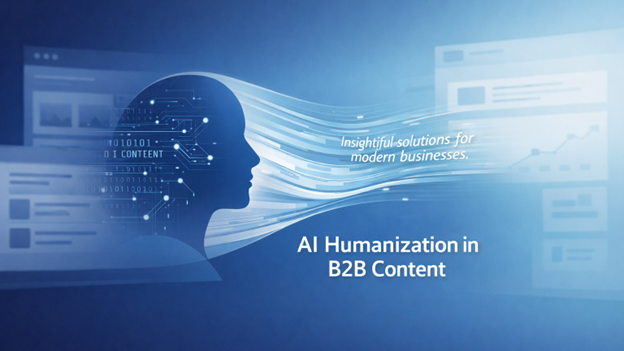How to Use Marketing Automation Tools to Improve B2B Campaign Performance in 2025
Marketing automation refers to the use of software tools that automate repetitive marketing tasks, allowing teams to focus on strategy and growth.
For B2B campaigns, automation is crucial because it ensures seamless communication with prospects throughout the sales cycle.
Automated systems streamline lead management by tracking and organizing potential customers based on their engagement, making it easier to target them with relevant messages at each stage and create ads that resonate with different audience segments.
This makes it easier to target them with relevant messages at each stage.
It plays a pivotal role in scaling operations, making campaigns more efficient without adding workload.
Unlike B2C, B2B marketing requires more targeted, long-term engagement, and automation ensures consistent follow-ups with leads.
Businesses also benefit from faster data collection, which helps them adjust strategies in real time.
As a result, companies can focus on higher-value tasks, enhancing productivity while maintaining personalized connections with their audience.
Key Differences Between B2B and B2C Marketing Automation
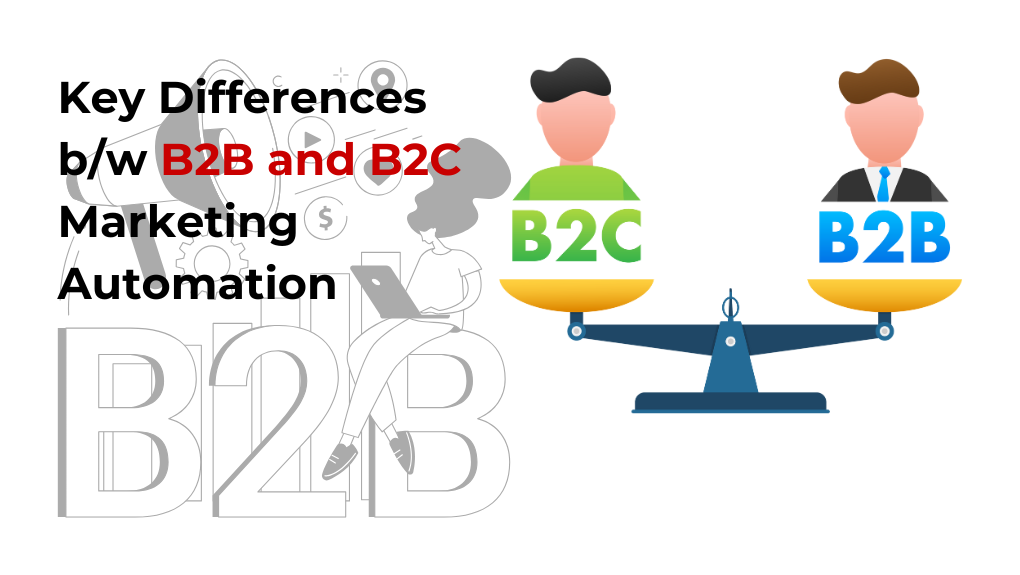
Although both B2B and B2C rely on automation, their approaches differ due to unique audience needs.
• Sales cycle length: B2B campaigns manage longer cycles with multiple touchpoints, while B2C focuses on quicker conversions.
• Target audience: B2B automation targets decision-makers within companies, whereas B2C caters directly to individual consumers.
• Communication style: B2B messages prioritize informative, relationship-building content, while B2C relies on emotional appeal.
• Lead management: B2B uses lead scoring and nurturing strategies to qualify prospects gradually. In contrast, B2C aims for immediate sales.
• Campaign complexity: B2B marketing involves multi-channel strategies, requiring advanced automation tools integrated with CRMs.
Also Read: What is B2B SaaS? Marketing?
B2B marketers often need to align automation efforts with sales teams for optimal performance.
In B2C, the focus is on driving rapid engagement through personalized offers and promotions.
These distinctions ensure that automation tools meet specific business objectives effectively.
Benefits of Automation Tools in B2B Marketing
Automation tools offer significant advantages that optimize how businesses handle their marketing efforts.
• Improves lead generation and engagement: Automated workflows identify and target high-quality prospects effectively.
• Personalized customer interactions: Tailored messages are sent based on behavior, increasing relevance and interest.
• Reduces manual workload: Teams save time by automating repetitive tasks like email scheduling and follow-ups.
• Increases campaign efficiency: Automated processes ensure consistent execution across multiple platforms without delays.
• Enhances data analysis: Real-time insights help marketers adjust strategies and maximize performance swiftly.
• Cuts operational costs: Automation minimizes human errors, reducing wasted time and resources.
These tools allow businesses to maintain meaningful interactions with potential clients while focusing on strategic growth.
With better lead tracking and streamlined communication, companies can convert prospects into customers more efficiently.
How Automation Enhances Lead Nurturing for Better Conversion Rates
Marketing automation significantly improves the way businesses handle lead nurturing, driving higher conversion rates.
• Automates follow-up processes: Timely follow-ups keep leads engaged without manual intervention.
• Personalizes interactions: Automated tools tailor messages based on a prospect’s behavior and preferences.
• Utilizes drip campaigns: A sequence of scheduled emails educates leads and builds interest gradually.
• Applies lead scoring: Automation tools assign scores to leads, helping marketers focus on high-potential prospects.
• Tracks engagement: Real-time data reveals how leads interact, allowing immediate responses to signals of interest.
Automation ensures consistent communication across different channels, maintaining relationships throughout the sales funnel.
By identifying and prioritizing the most engaged prospects, marketers can allocate resources more efficiently.
This approach maximizes the chance of conversion, as leads receive relevant content at each stage of the buying process.
Key Features to Look for in Marketing Automation Tools
Effective marketing automation tools come equipped with essential features that streamline campaign management and execution.
• Lead tracking and segmentation: These tools group prospects based on behavior, ensuring precise targeting.
• Personalization capabilities: They customize messages according to audience preferences, increasing engagement and relevance.
• CRM integration: Seamless data flow between automation tools and CRM systems enhances customer relationship management.
• Analytics and reporting: Built-in analytics track performance, helping marketers adjust strategies quickly for better outcomes.
• Multi-channel support: Automation tools manage campaigns across email, social media, and other platforms efficiently.
• Workflow automation: Automated processes handle tasks like scheduling, follow-ups, and lead scoring with minimal effort.
These features enable businesses to enhance campaign effectiveness while reducing manual workload.
Choosing tools with these capabilities ensures companies can scale their operations smoothly and achieve better results.
Comparing Features and Pricing of Key Tools
When selecting between HubSpot, Marketo, and Pardot, comparing features and pricing is essential.
HubSpot offers a free plan with basic features, while advanced plans start at around $50 per month. Its strength lies in its easy-to-use interface and built-in CRM.
• Marketo requires custom pricing based on business size, typically starting at $1,000 per month. It offers powerful customization and multi-touch campaign tracking for large organizations.
• Pardot pricing begins at $1,250 per month and integrates seamlessly with Salesforce, making it ideal for businesses already using the platform.
HubSpot provides a more accessible solution for startups and growing businesses, while Marketo caters to enterprises that need in-depth analytics.
Pardot is the best fit for companies focused on account-based marketing and leveraging Salesforce’s ecosystem for deeper insights.
Choosing the Right Tool Based on Business Goals
Selecting the right automation tool depends on your business goals and operational needs.
• For startups or small businesses: HubSpot offers an affordable, user-friendly option with easy onboarding and built-in CRM.
• For enterprises: Marketo’s advanced customization and detailed reporting suit organizations managing complex, large-scale campaigns.
• For Salesforce users: Pardot aligns perfectly with businesses that rely on Salesforce CRM for seamless data flow and lead management.
Your decision should also consider factors like budget, team expertise, and campaign complexity.
For example, a hookah wholesale supplier aiming for rapid growth might benefit from HubSpot’s simplicity and user-friendly interface, while those focused on data-driven decision-making should consider Marketo for its robust analytics capabilities.
Pardot stands out for companies already invested in the Salesforce environment, helping them streamline both marketing and sales operations efficiently.
How to Align Automation with Sales Funnel Stages
Aligning automation with the sales funnel ensures that prospects receive relevant messages at every stage. In the awareness stage, automation delivers informative content, such as blogs and newsletters, to attract potential leads.
As prospects move to the consideration stage, personalized emails and targeted campaigns provide detailed product information, helping to build trust and engagement.
In the decision stage, automated follow-ups and reminders encourage prospects to take action, such as booking a demo or making a purchase.
Lead scoring plays a vital role in prioritizing high-intent prospects, ensuring that sales teams engage with the right leads at the right time.
Drip campaigns are also effective during the consideration phase, consistently nurturing interest without overwhelming recipients. Automating these tasks ensures smooth communication and reduces delays that could hinder conversions.
By properly aligning automation with each funnel stage, businesses streamline the sales process, resulting in higher engagement and faster deal closures.
How Marketing Automation Can Boost SEO and Domain Rating
Integrating marketing automation with SEO strategies can significantly enhance online visibility and domain rating.
Automated content distribution ensures consistent publication of SEO-optimized blogs and landing pages, improving organic search rankings.
Automation tools help monitor keyword performance and suggest improvements, keeping content aligned with search engine algorithms.
Moreover, automated outreach campaigns streamline backlink generation by identifying relevant websites and sending personalized pitches, improving the quality of inbound links.
Higher domain rating results from acquiring authoritative backlinks, maintaining content consistency, and optimizing on-page elements.
Using automation to track website performance metrics like bounce rates and traffic sources also helps refine SEO strategies.
By blending automation with SEO efforts, businesses can achieve sustainable growth in organic traffic and enhance their domain authority over time.
Best Practices for B2B Email Marketing Automation
Implementing effective B2B email marketing automation requires following specific practices to enhance campaign performance.
• Segment your audience: Group leads based on behavior, demographics, or interests to send relevant emails.
• Personalize email content: Use dynamic fields to address recipients by name and tailor messages to their needs.
• Use drip campaigns: Send a series of automated emails that nurture leads gradually through the sales funnel.
• Monitor engagement metrics: Track open rates, click-through rates, and responses to identify areas for improvement.
• Test subject lines and content: A/B testing helps refine messaging and optimize email performance over time.
• Ensure mobile compatibility: Design emails that display properly on all devices to maximize engagement.
Applying these practices ensures that automated email campaigns resonate with prospects and drive better conversions.
Regularly analyzing data allows marketers to fine-tune strategies and maintain high engagement rates.
How to Measure the Impact of Automation on ROI
Measuring the impact of automation on ROI involves tracking key metrics that reflect campaign performance.
Businesses must evaluate conversion rates to determine how effectively automation turns leads into customers.
Monitoring lead generation numbers also provides insight into whether automated efforts attract quality prospects.
Analyzing cost per acquisition helps assess if the resources invested align with the revenue generated.
Tracking engagement metrics, such as email open and click-through rates, highlights audience interaction and campaign relevance.
It's essential to compare revenue growth before and after implementing automation to gauge its financial impact.
Automated reporting tools streamline the data analysis process, offering clear insights into what strategies work best.
Consistently measuring these indicators ensures businesses can optimize campaigns and maintain a positive return on investment.
Conclusion
Marketing automation plays a pivotal role in enhancing the performance of B2B campaigns by streamlining processes, improving lead management, and fostering engagement throughout the sales funnel.
By leveraging tools such as HubSpot, Marketo, and Pardot, businesses can optimize campaigns, align efforts with sales goals, and achieve higher ROI.
However, success depends on careful tool selection, avoiding common automation mistakes, and ensuring proper alignment with funnel stages.
Regular analysis of metrics allows businesses to refine their strategies, maximizing the impact of automation on revenue growth and conversions.
FAQs
1. How does marketing automation benefit B2B companies?
A. Automation improves lead management, nurtures prospects effectively, and aligns campaigns with sales funnel stages.
2. What are some essential features to look for in automation tools?
A. Look for CRM integration, lead scoring capabilities, multi-channel campaign support, and detailed performance analytics.
3. Which tool is better for small businesses, HubSpot, Marketo, or Pardot?
A. HubSpot is ideal for small businesses due to its affordability, user-friendly interface, and built-in CRM.
4. How can businesses avoid common automation mistakes?
A. Regular workflow audits, proper lead segmentation, and maintaining up-to-date data help avoid critical errors.
5. How can I measure the ROI of automated campaigns?
A. Track conversion rates, engagement metrics, lead generation, and revenue growth to assess automation’s impact on ROI.

